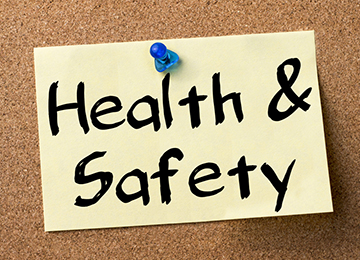OSHA issued its final rule for respirable crystalline silica on March 24, 2016. Considering that silica was first listed on OSHA’s regulatory agenda in 1997, this final rule has been a long time coming. This rule will protect an estimated two million construction workers and 300,000 general industry workers from the effects of silica exposure, and covers workplaces as diverse as stone cutting/shaping, foundries, road construction, and the oil and gas industry. OSHA predicts that once the rule is implemented, it will save more than 600 lives annually and prevent more than 900 new cases of silicosis each year.
What exactly is silicosis? According to the Centers for Disease Control / National Institute for Occupational Safety and Health, silicosis is a disabling and often fatal lung disease caused by breathing dust that contains very small pieces of crystalline silica, which can be found in materials such as concrete, masonry, paint, and sandstone. Cutting, breaking, crushing, grinding, or blasting these materials can produce fine silica dust. As the dust builds up in your lungs, they become damaged, making it hard to breathe. You may be exposed to silica dust even when the dust is not visible. Silicosis is not curable, but it is preventable.
While two standards have been issued (one for construction and the other for general industry and maritime) both standards lower the permissible exposure limit to 50 micrograms per cubic meter of air and set an Action Level (AL) of 25 µg/m3 over an eight-hour work shift. The oil and gas industry also has a special target compliance date focusing on implementing engineering controls, such as water or ventilation. Exposure to silica dust can generally be reduced using equipment that is widely available. This includes vacuum systems or water/wet cutting/drilling, which reduce or capture dust being generated at the source. Businesses have the flexibility to choose equipment based on its overall performance. Employers are also required to offer medical exams to those who may be overexposed, and must inform and train workers on the risks of silica exposure.
Employers must comply with most of the requirements within five years of the final rule’s effective date of June 23, 2016. The schedule for compliance is:
• Construction – Employers must comply with all requirements by June 23, 2017 with the exception of methods of sample analysis (final compliance date June 23, 2018).
• General Industry and Maritime – Employers must comply with all requirements by June 23, 2018 with the exception of medical surveillance for employees exposed at or above the action level for 30 or more days a year (final compliance – June 23, 2020).
• Hydraulic Fracturing – Employers must comply with all requirements of the standard by June 23, 2018. However, employers have an additional three years (June 23, 2012) to meet the engineering control requirements.
OSHA has published a variety of resources to assist employers with compliance at OSHA.gov/silica, including fact sheets, resources from other agencies and organizations, and a ‘Frequently Asked Questions’ page that is updated as additional refinement and interpretations are made.
If you have questions regarding the standard, compliance questions, or need to know what it all means to you, please contact ECS Director of Industrial Hygiene Christopher J. Chapman, CIH.

